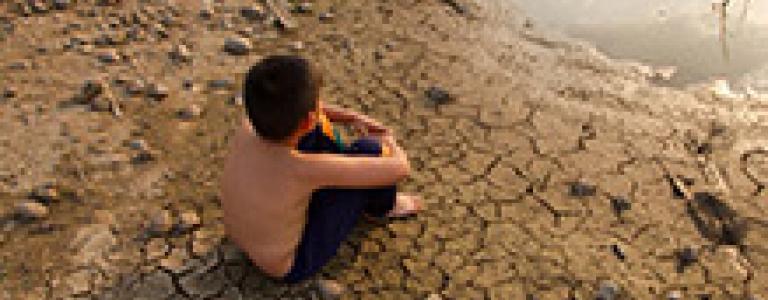Climate Change Intensifies the Refugee Crisis
The refugee crisis unfolding across Europe’s borders is a long-term challenge without easy fixes.
Crisis management is certainly top priority, but it does not replace the need to tackle the problem at its core. This includes recognizing the stresses that a changing climate are placing on poor and fragile states—and supporting communities to adapt.
While not a direct driver of the conflict in places like Syria, climate change does threaten to act as what UN Secretary-General refers to as a “threat multiplier,” exacerbating existing tensions and potentially triggering new conflicts as it interacts with the country—and region’s—existing conflict drivers: terrorism, political instability, inequality, poverty, weak governance and ethnicity.
For West and North African migrants attempting the Mediterranean crossing, the economic and political factors pushing them toward Europe are often intimately linked to a changing climate and environment. Without greater support to help these individuals and their families cope with and adapt to environmental change, their numbers are likely to continue to swell.
The region has long had a history of severe weather. Droughts defined public perception of the West African Sahel for much of the 1970s and 1980s, and today these periods of dryness, as well as intense flooding, are increasingly common. Temperatures continue to rise, as does the rate at which surface water is evaporating. These climate patterns are already impacting the region, through decreased agricultural yields, the loss of pastures and the drying up of lakes and rivers. And the impacts are expected to worsen in the coming decades.
By changing where and when rain falls, and how much of it falls, climate change will continue to challenge livelihoods across North and West Africa, livelihoods that are often inexorably tied to water. Farmers and herders from the region will be more and more constrained as they try to make ends meet, and their governments—already under-resourced and weakened by conflict and corruption—will not be in a position to help them. Under these circumstances, it is entirely conceivable that the region’s growing, young populations, pushed by dwindling economic opportunities, overstretched governments, failing livelihoods and scarcities of water and land, will increasingly look outside of the borders for an answer.
The decision to migrate is, of course, never taken lightly. For most African migrants, the preference would be to remain at home, surrounded by family and friends, rather than to risk their lives in the boats heading northward across the Mediterranean. If they make the crossing—which we have seen is by no means a certainty—Europe offers the promise of economic advancement. But it also brings with it considerable dangers once land is reached: risks of harassment, arrest and deportation; the threat of xenophobia; and the mental strain and isolation brought on by being hundreds of miles from home. But the dangers of staying at home can be greater still: the threat of violence and death in Syria, the threat of joblessness and severe poverty in West Africa.
Europe’s leaders and the international community more broadly are grappling with responses to the immediate crises, and more is needed to meet the needs of both refugees fleeing conflict and migrants fleeing poverty. In their response, the international community should not neglect to address the root causes of both crises, root causes that include climate change. By helping those most vulnerable adapt to and cope with the increasingly dire impacts of a changing climate, the international community will help to ensure that the decision to migrate is a choice, and not a necessity.
You might also be interested in
What the G7 Ministerial Could Have Delivered on Fossil Fuel Subsidies Reform
The G7 climate, energy, and environment ministers’ meeting in Turin fell short when it came to breaking the 15 years of gridlock on fossil fuel subsidies. Here are three ways the G7 can use their next meetings to demonstrate measurable progress.
Adaptation is the world's unheralded tool to deal with climate change
Reducing greenhouse gas emissions is a cut-and-dry way to stop climate change. But how the world responds to the impacts already taking place is a whole other can of worms—a large can, and one that can seem incomprehensible.
Could CSDDD Signal A Tipping Point For Corporate Accountability?
This week has seen the EU agree new rules on supply chain due diligence, one of a set of laws passed including action on toxic air, packaging and packaging waste. What the Corporate Sustainability Due Diligence Directive establishes is legal liability for corporates on environmental and human rights issues in the European courts—and that could change the framework of corporate accountability.
Why does the EU want to quit the Energy Charter Treaty?
European lawmakers have backed plans for the EU to exit a treaty that lets fossil fuel firms sue when climate policies hit profits.
